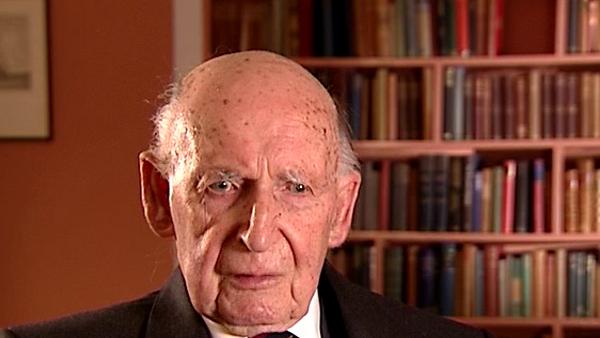I attended a local school. I might say that the village has now grown and the school has been replaced, which I'm honoured to say bears my own name, but that's by the way. That indicates the enormous growth around that area. I think I was fortunate in that when it was time for me to leave the local village school, a new school had been opened. It was then called the Kingswood; I think it was then the Kingswood Secondary School or Grammar School. I think its name has subsequently been changed, but it was about two miles from where I was living, and I cycled there regularly, every day and so I lived at home during this formative period of my life. The school was modern in the sense that it was a mixture of girls and boys and indeed I think I was one of the earliest scholars there, I think one year after the school was opened, I became one of the pupils.
The headmaster was a retired major, Major Eaton, who was extremely strict. Now, I don't think I was a very good scholar. I was... the new radio, we call it radio now. It was then called wireless, the earliest stations had just been operating and I think we used to listen on headphones, with a crystal set, and then I became so interested that I built my own receivers, and eventually made an illegal transmitter, so that I could transmit short distances. It was all very crude in those days, with the aerial strung between very high poles in one's garden.
My life was changed significantly when I was, I suppose, the age of 15. I don't think I was terribly good at anything. I was pretty near the bottom of the class, or not more than halfway up. And then one day, for the sake of the outing the physics master or one of the physics masters took me, with a party, to a lecture in the University of Bristol. Now, I had rarely been to a big city and never to a university. Now, the University of Bristol had just built, had built a new physics building called the HH Wills Physical Laboratory and I was absolutely astonished by that building, particularly the lecture room. The lecture was by the Professor AM Tyndall, who was a director of the physical laboratories, and it was on the electric spark.
Now, many, many years later when I was quite old, I met the director of the Royal Institution and he said, 'Oh yes, that was the notable lecture that Tyndall gave as one of the children's lectures at the Royal Institution, and he must have given it either as a rehearsal or as a repeat of those lectures'. Well, I can see that lecture room now. A marvellous room with electric sparks raging right across the room, the hissing arc running the epidiascope and Tyndall showing the difference to his teeth, false teeth in ultraviolet light and so on. Well, after that night the... it was remarkable. I had a great ambition to become one of Tyndall's pupils, and I did so. After another two or three years of examinations, I became in September 1931, that is a few years after my 18th birthday... I became a pupil of Tyndall, and three years later, I graduated.





